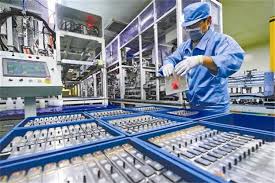High-Quality O-Ring Rubber Seals from Leading Manufacturers for Reliable Sealing Solutions
The Importance of O-Ring Rubber Seals A Comprehensive Overview
O-rings are essential components used in a myriad of applications across various industries. As a manufacturer of O-ring rubber seals, understanding their significance, materials, applications, and manufacturing processes is crucial to delivering high-quality products that meet the needs of diverse sectors.
What are O-Rings?
An O-ring is a mechanical gasket in the shape of a torus, primarily used to create a seal at the interface between two parts, preventing the passage of fluids or gases. The simplicity of their design belies their effectiveness, as they can withstand high pressures and temperatures, making them suitable for numerous applications ranging from automotive to aerospace.
Materials Used in O-Ring Manufacturing
The choice of material for O-ring manufacturing is critical to their performance. Common materials include
1. Nitrile Rubber (NBR) This is one of the most popular materials, known for its excellent resistance to oils, fuels, and solvents. It is ideal for automotive applications where petroleum exposure is common.
2. Fluorocarbon (FKM) Often referred to as Viton, FKM is known for its superior resistance to heat, chemicals, and weathering. It is widely used in aerospace and high-temperature applications.
3. Silicone Rubber Silicones are preferred for applications requiring flexibility and resistance to extreme temperatures. They are often found in food and medical applications due to their non-toxic properties.
4. Ethylene Propylene Diene Monomer (EPDM) This material excels in weather resistance and is commonly used in outdoor applications and automotive seals.
Applications of O-Ring Rubber Seals
O-rings are ubiquitous in various industries. Some notable applications include
- Automotive Industry O-rings are used in numerous engine components, fuel systems, and hydraulic systems to prevent leaks and ensure optimal performance.
o ring rubber seals manufacturer

- Aerospace Given the extreme conditions encountered by aircraft, O-rings made from high-performance materials are critical for ensuring the integrity of fuel and hydraulic systems.
- Manufacturing O-rings are essential in machinery and equipment, serving as seals in hydraulic cylinders, pneumatic devices, and pumps.
- Medical Devices With growing regulations, O-rings used in medical applications must be made from biocompatible materials to ensure patient safety.
- Food and Beverage In this sector, compliance with health standards is paramount. O-rings made from FDA-compliant materials are crucial for ensuring safety and preventing contamination.
The Manufacturing Process
The production of O-ring rubber seals involves several steps
1. Material Selection Choosing the right rubber compound based on the application requirements.
2. Molding The selected rubber material is heated and molded into the O-ring shape using a mold. This process often employs compression, transfer, or injection molding techniques.
3. Curing The molded O-rings are then cured in an oven, which helps to solidify the rubber and enhance its durability and elasticity.
4. Quality Control Rigorous testing is performed to ensure that the O-rings meet industry standards and specifications. This includes checking for dimensions, hardness, and flexibility.
5. Packaging Once approved, the O-rings are packaged and prepared for shipment to various clients.
Conclusion
As an O-ring rubber seals manufacturer, understanding the intricacies of material selection, application requirements, and the manufacturing process is vital for producing high-quality seals. O-rings play an indispensable role in a multitude of industries, ensuring their functionality and safety in various applications. Whether it's in an engine, an aircraft, or a medical device, the reliability of O-ring seals is critical, underscoring the importance of precise manufacturing and quality control in their production.
Share
-
The Best Lubricants for Aluminum Roller GuidesNewsJul.23,2025
-
Slitting Machine Applications in the Packaging IndustryNewsJul.23,2025
-
Rolling Roller Balancing Techniques for Smooth OperationNewsJul.23,2025
-
How To Optimize An EV Battery Assembly LineNewsJul.23,2025
-
Energy Efficiency in Modern Battery Formation EquipmentNewsJul.23,2025
-
Automation Trends in Pouch Cell Assembly EquipmentNewsJul.23,2025







